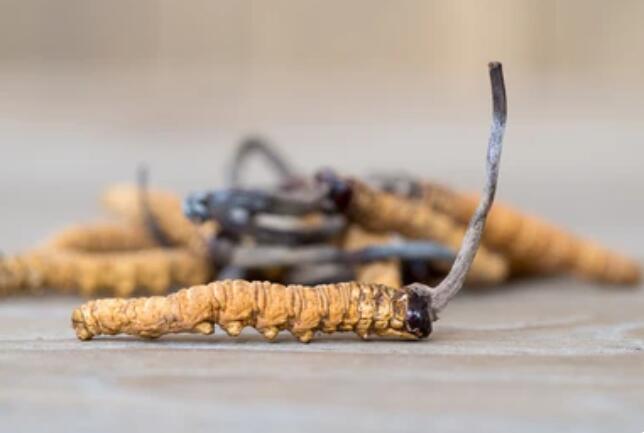Ophiocordyceps sinensis
Inquiry
Ophiocordyceps sinensis is a composite of larval body (mycorrhiza) and fungal zygote formed by Ophiocordyceps sinensis of Ophiocordycipitaceae by infesting the larvae of insects of the Hepialidae family. Ophiocordyceps sinensis contains a variety of bioactive substances, which may have a wide range of pharmacological effects such as immunomodulation, antibacterial, antitumor, antioxidant, antiaging, and hypoglycemic and hypolipidemic. Lifeasible has extensive experience detecting and characterizing Ophiocordyceps sinensis, genetic diversity, and genomic research. We can support you with various research projects, including the construction of technology platforms for the asexual type culture of Ophiocordyceps sinensis, deep fermentation of mycelium, and captive rearing of host insect larvae.

What We Offer
- Random amplified polymorphic DNA (RAPD) and inter-simple sequence repeat (ISSR) analyses help you reveal genetic differentiation among different geographic groups of Ophiocordyceps sinensis.
- Using DNA fragments such as the ribosomal DNA internal transcribed spacer region (rDNA-ITS) and the mating type gene (MAT1-2-1) as molecular markers will help you reveal the genetic diversity of Ophiocordyceps sinensis. We can also provide technical support for studying the origin and spread of Ophiocordyceps sinensis and its coevolutionary relationship with its host insects.
- Whole genome shotgun sequencing was used to obtain a relatively complete and high-quality reference genome map of Ophiocordyceps sinensis.
- Single-molecule real-time sequencing (SMRT sequencing) was used to analyze the epigenetic modification patterns of the mitochondrial genome of Ophiocordyceps sinensis.
- Fungal strains were isolated from natural Ophiocordyceps sinensis by conventional isolation and cultivation methods, and these strains were characterized morphologically and analyzed for nrDNA-ITS sequence similarity.
Modeling
- Utilizing the spatial analysis capabilities of a geographic information system (GIS) and habitat models of species distributions (e.g., the MaxEnt Markov model) can overcome the limitations of sampling surveys and help you to make some predictions about the impacts of climate change on the distribution of Ophiocordyceps sinensis resources and production.
- Based on remote sensing and GIS analysis, use the relationship between environmental factors such as snowline elevation, average temperature, precipitation, and hours of sunshine during the harvest period and Ophiocordyceps sinensis yield that you provide. Help you build a weighted geometric mean model to predict Ophiocordyceps sinensis yields for the year.
- MaxEnt, GAM, and other methods can help you construct predictive models of Ophiocordyceps sinensis distribution under different climate change scenarios.
- A generalized host-pathogen mechanical model can be constructed to help you predict the impact of different harvesting methods on Ophiocordyceps sinensis yield.
Lifeasible can help you apply genomics, transcriptomics, and proteomics, including other omics tools such as metagenomics, metabolomics, immunomics, and RNA-omics, to various studies of Ophiocordyceps sinensis, and combine them with appropriate modeling analysis. This will be conducive to improving and solving the degradation problem of Ophiocordyceps sinensis strains and constructing related metabolic pathways to accelerate the pace of its basic research and application. Please feel free to contact us for more information.
For research or industrial raw materials, not for personal medical use!
Related Services

